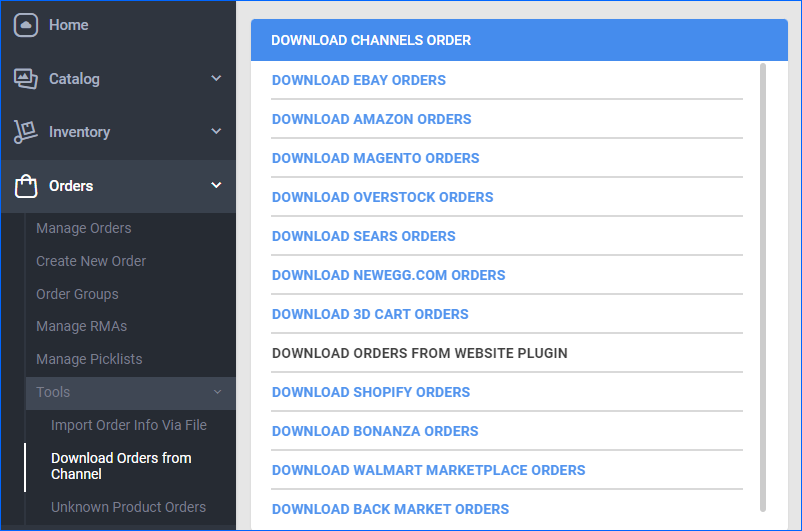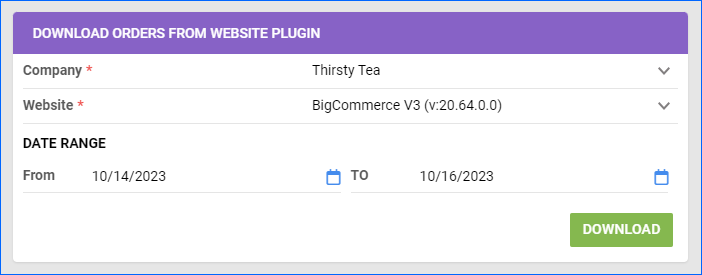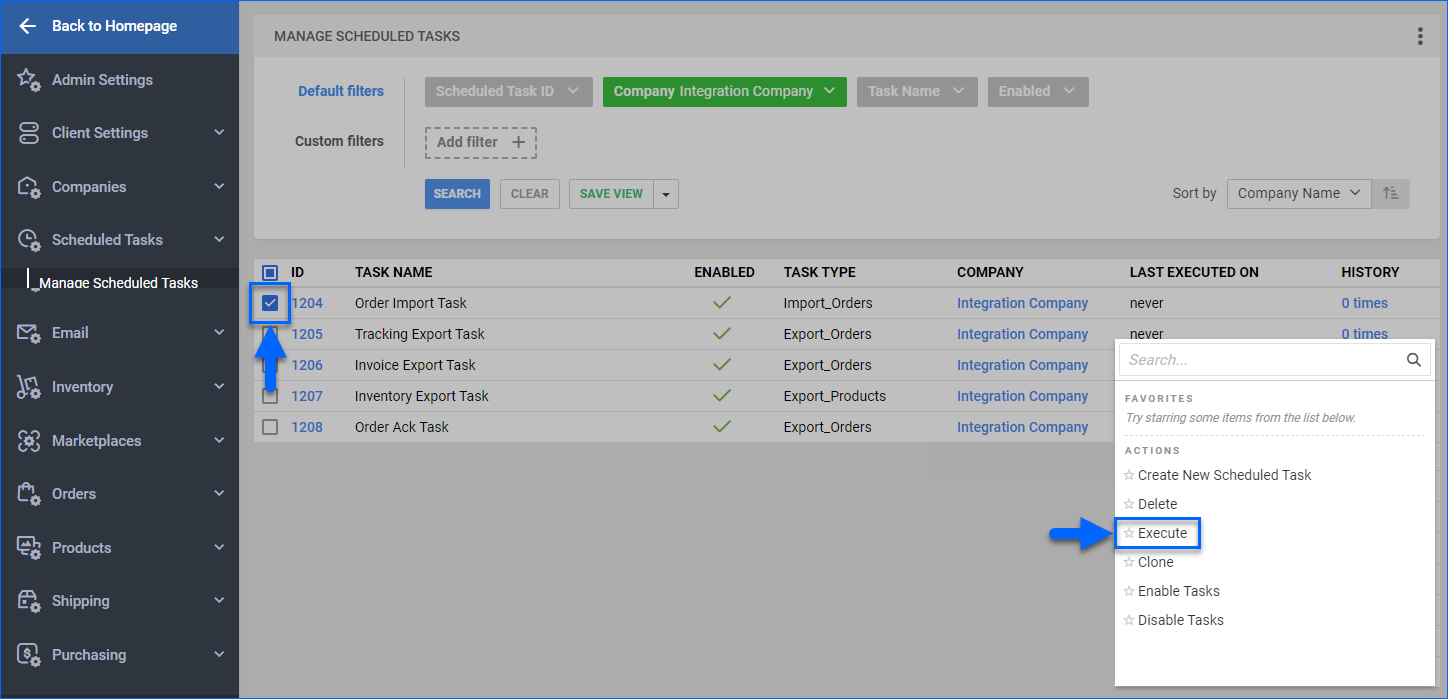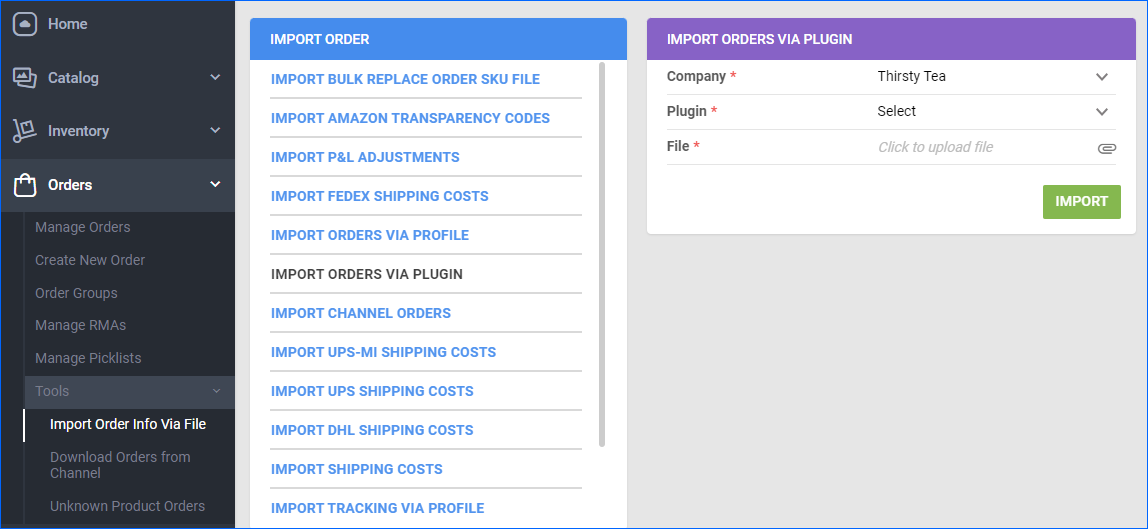Overview
For the majority of sales channels, Sellercloud downloads orders automatically on a regular basis. However, in some cases, you may have to manually download orders from a channel.
This option is most commonly used during the initial setup of a channel integration or as a regular way to import orders for an integration where you can’t download orders automatically. It can also be a helpful backup option if something prevents the default automatic order download. Another potential use is resolving an issue with a specific order – you can delete the order and then re-download it.
This article guides you step-by-step through the process of downloading orders from the following channels:
- eBay
- Amazon (including FBA)
- Magento
- Overstock
- Sears
- Newegg.com
- 3D Cart
- Website plugin
- Shopify
- Bonanza
- Walmart Marketplace (including WFS)
- Back Market
- Wish
- Lightspeed
Download Channel Orders
To manually download orders from a specific channel to Sellercloud:
- Go to Orders > Tools > Download Orders from Channel.
- Select the channel to download from.

- Configure the download by selecting the Company to download orders to, the Date Range with orders to import, and any other options, if available.
When downloading orders from Amazon, make sure to stay within a time frame of one month. If you need orders from a more extended period, split your requests into one-month segments. This guideline doesn’t apply to other channels, but as a general rule of thumb, you should avoid downloading orders for extended periods all at once. - Click Download.

- Sellercloud creates a Queued Job. Click the link in the notification at the bottom of the page to view the queued job. Note that the orders may not be visible right away.

Channel-Specific Options
In addition to the standard options mentioned above, these channels have additional options available on the download orders page:
eBay
- EBay Site – Select the eBay site nationality.
- EBay Item ID – Enter eBay product IDs to download only orders containing them.
- Order Source OrderID List – Enter a list of eBay order IDs to download only selected orders.
- Use Large Merchant Services – Use LMS instead of the standard SOAP-based order import.
Amazon
- Download FBA Orders – Check to download FBA orders.
Shopify
- Order IDs List – Order IDs should be fully numeric, like 5360204908230. For multiple Orders, use comma-separated values.
Walmart Marketplace
- Download WFS Orders – Check to download WFS orders.
Plugin Integrations
If you’ve configured Channel Plug-in Integrations Through Scheduled Tasks, you can download orders from the channel using your Order Import plugin. You can do this by manually executing your Scheduled Task for Order Import or even by importing orders from a file.
To execute a scheduled task:
- Go to Settings.
- Select Scheduled Tasks > Manage Scheduled Tasks.
- Find and select the order import task.
- Click the blue Actions icon at the bottom right.
- Select Execute.

- A Queued Job will be created to execute the task. Click the link in the notification at the bottom to view the queued job. Note that you must refresh the queued job’s page to track progress.
To import plugin integration orders from a file:
- Go to Orders > Tools > Import Order Info Via File.
- Select Import Orders Via Plugin.
- Select the Company to import orders to.
- Select your channel’s Order Import Plugin.
- Upload the order File from your device.
- Click Import.

- A Queued Job will be created to execute the task. Click the link in the notification at the bottom to view the queued job. Note that you must refresh the queued job’s page to track progress.